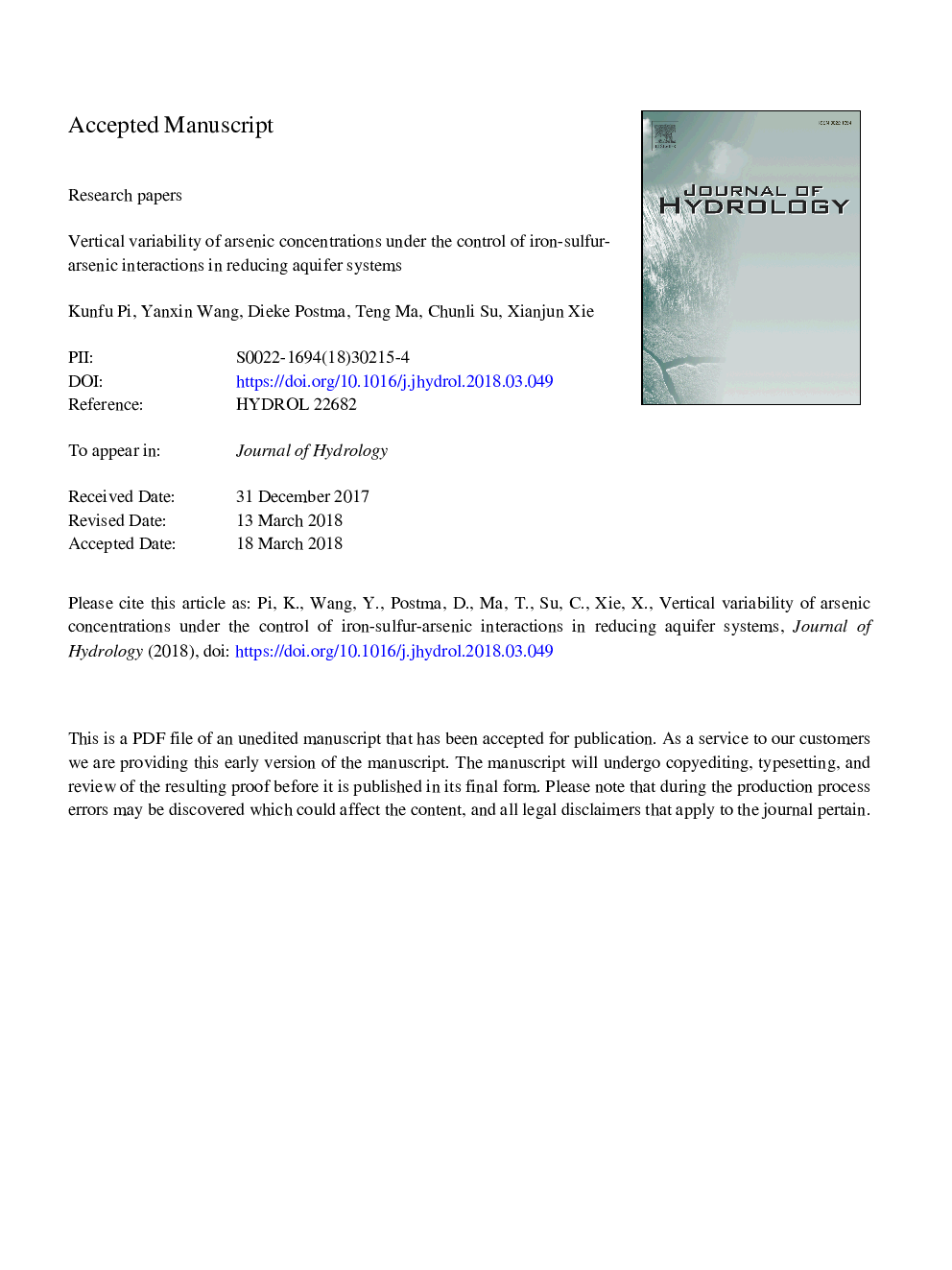| کد مقاله | کد نشریه | سال انتشار | مقاله انگلیسی | نسخه تمام متن |
|---|---|---|---|---|
| 8894740 | 1629893 | 2018 | 45 صفحه PDF | دانلود رایگان |
عنوان انگلیسی مقاله ISI
Vertical variability of arsenic concentrations under the control of iron-sulfur-arsenic interactions in reducing aquifer systems
ترجمه فارسی عنوان
تغییرات عمودی غلظت آرسنیک تحت کنترل آلودگی آهن-گوگرد و آرسنیک در کاهش سیستم های
دانلود مقاله + سفارش ترجمه
دانلود مقاله ISI انگلیسی
رایگان برای ایرانیان
کلمات کلیدی
موضوعات مرتبط
مهندسی و علوم پایه
علوم زمین و سیارات
فرآیندهای سطح زمین
چکیده انگلیسی
High spatial variability of arsenic (As) concentration in geogenic As-contaminated groundwater has been commonly observed worldwide, but the underlying reasons remain not well understood. Selecting a sulfate-containing, As-affected aquifer at the Datong Basin, northern China as the study area and combining hydrogeochemical investigation and sediment extraction with reactive transport modeling, this work elucidated the roles of Fe-S-As interactions in regulating the vertical variation of As concentration in the groundwater. Dissolved As concentration varied between 0.05 and 18â¯Î¼mol/L, but generally increased in the depth of 20-25â¯m and then decreased in 25-30â¯m. The high-As groundwater contained low Fe(II) (<0.007â¯mmol/L) and up to 15â¯Î¼mol/L sulfide, in contrary to the S/SE Asian deltas/floodplains where high Fe(II) and As jointly occur in the groundwater devoid of sulfate reduction. The reductive dissolution of As-bearing Fe(III) oxides coupled to the degradation of organic matter with an estimated maximum rate of 0.22â¯mmol C/L/yr, mainly accounted for the depth-dependent increase of As concentration in the upper part of the shallow aquifer (<25â¯m deep). However, the decreasing reactivity of Fe(III) oxides together with the increase of pH over depth rendered the majority of electrons being transferred to sulfate reduction. The Fe(II) sulfides formed as a consequence not only helped to restrict the build-up of Fe(II) in the groundwater but also probably co-precipitated As to prompt As decrease in the depth of 25-30â¯m. Arsenite adsorbed on remaining Fe(III) oxides and newly-formed Fe(II) sulfides is another important pool of As in the aquifer, which varies in response to the extents of Fe(III)-oxide and sulfate reduction and consequently alters As distribution coefficient between the solid and the aqueous phases. This study highlights the importance of coupled geochemical cycling of Fe, S and As for As mobilization and reveals how it regulates As partitioning between groundwater and sediments.
ناشر
Database: Elsevier - ScienceDirect (ساینس دایرکت)
Journal: Journal of Hydrology - Volume 561, June 2018, Pages 200-210
Journal: Journal of Hydrology - Volume 561, June 2018, Pages 200-210
نویسندگان
Kunfu Pi, Yanxin Wang, Dieke Postma, Teng Ma, Chunli Su, Xianjun Xie,
